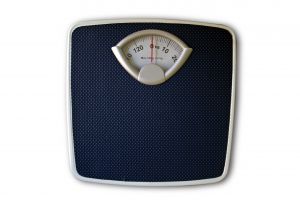Methods for Measuring Obesity and Limitations of Using BMI

With the concerns about obesity-related diseases on the rise, healthcare workers need a simple, reliable method for measuring obesity. Body Mass Index (BMI) has been a popular method because of its relative ease of use and clear cutoff points that are easily communicated. For instance, a BMI of 18-25 is healthy, while a BMI over 30 indicates obesity.
BMI is a calculation that measures an individual's weight in relation to height.
The formula for calculating BMI is as follows:
BMI = weight (kg) / (height (m) x height (m))
Despite its popularity, there are several limitations with using BMI as an obesity measure. Firstly, BMI failes to take into consideration the distribution of body fat. It is a commonly known fact that body fat around the waistline is dangerous than body fat on the hips. Secondly, BMI does account for the type of mass recorded, for instance muscle mass versus fat mass. Because of this, BMI calculations will identify healthy, muscular individuals as overweight or obese.
BMI also does
not account for specific variations such as age, gender and race, which have different implications as far as obesity-related diseases are concerned. For instance, the Expert Consultation on BMI in Asian
populations revealed that Asians with BMI values of 22-25 had an increased risk for type 2 diabetes
and cardiovascular disease and BMI values of 26-31 translated to high risk. These BMI values are much lower than the international BMI
standards which indicates increased risk above a BMI of 25.
Finally, the standard BMI cut-off values are irrelevant to children who have different body and fat proportions compared to adults.
To overcome these limitation, other methods for measuring obesity have been recommended:
1. Waist Circumference
As mentioned earlier, it is well known that fat around the waist (commonly referred to as "apple shaped") is more biologically active than fat on the hips (commonly referred to as "pear shaped"). Research also shows that waist circumference correlated more closely to obesity-related diseases, where a larger waist circumference is associated with a higher risk of type 2 diabetes, high blood pressure, increased cholesterol levels and heart disease. The cut-off figures for determining obesity with waist circumference is 40 inches for men and 35 inches for women.
The main limitations for using waist circumference is the difficulty of getting an accurate measurement. The guidelines for measuring waist circumference is to take the mid-point of the area between the base of the rib cage and the top of the hip bone. The tape measure should be snug but not pinch the skin.
2. Body Fat Percentages
There is new research that reveals the value of assessing body fat by utilising special equipment for measuring body fat percentages. Unlike BMI which can incorrectly assess individuals who are athletic, body fat percentages can give a more accurate picture by offering a more specific measure of actual fat content. The main limitations to this method of measuring obesity is the cost of equipment required.
3. Skin-fold Thickness
Although this can provide a good indication of overall body fat, there are some major limitations to this method of measure. When done properly, skin-fold thickness can be a useful method for determining overall body fat. Unfortunately, it takes time and proper training before the callipers can been used properly. Many individuals using this method of measure are not sufficiently experienced to do so.
These are just three alternative methods for measuring obesity. There are others available. Unfortunately, no one methods offers the accuracy or simplicity that healthcare providers seek. It is important to be aware of the specific limitations associated with each method of measure when utilising them to determine obesity. To prevent misdiagnosis, it may be better to combine the use of two methods of measure to eliminate errors in measurement. Additionally, healthcare providers also need to exercise their judgement, for instance, in the case where the BMI indicates obesity but the individual is clearly of athletic build.










